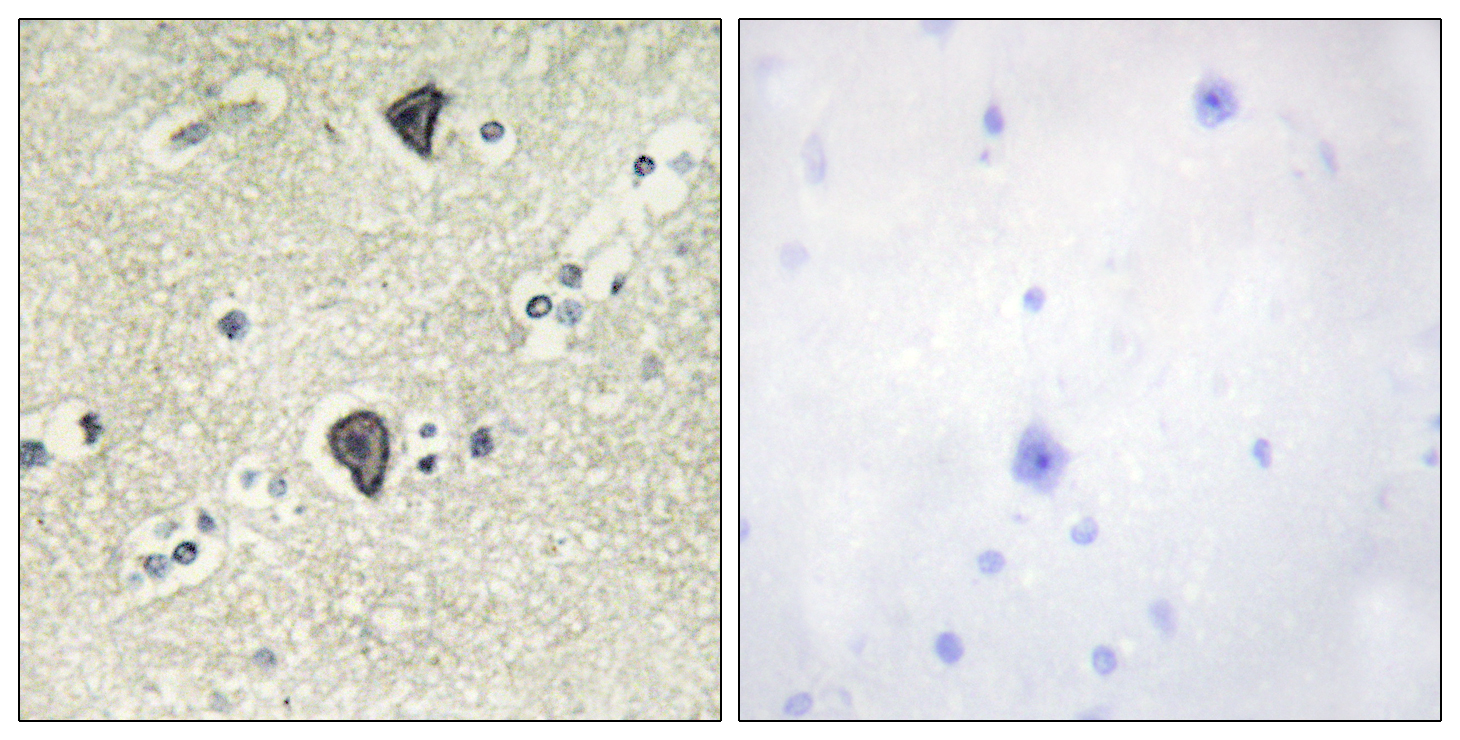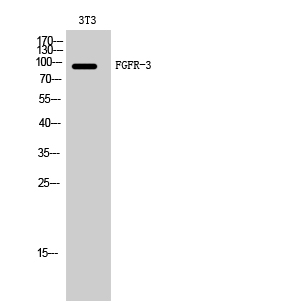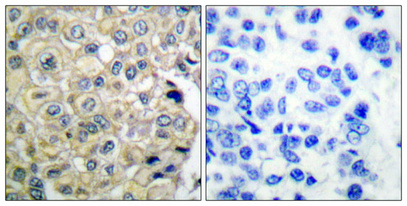组织表达
Expressed in brain, kidney and testis. Very low or no expression in spleen, heart, and muscle. In 20- to 22-week old fetuses it is expressed at high level in kidney, lung, small intestine and brain, and to a lower degree in spleen, liver, and muscle. Isoform 2 is detected in epithelial cells. Isoform 1 is not detected in epithelial cells. Isoform 1 and isoform 2 are detected in fibroblastic cells.
功能
catalytic activity:ATP + a [protein]-L-tyrosine = ADP + a [protein]-L-tyrosine phosphate.,disease:A chromosomal aberration involving FGFR3 may be a cause of multiple myeloma (MM) [MIM:254500]. Translocation t(4;14)(p16.3;q32.3) with the IgH locus.,disease:Defects in FGFR3 are a cause of bladder cancer [MIM:109800]. Somatic mutations can constitutively activate FGFR3.,disease:Defects in FGFR3 are a cause of cervical cancer [MIM:603956].,disease:Defects in FGFR3 are a cause of hypochondroplasia (HCH) [MIM:146000]. HCH is an autosomal dominant disease and is characterized by disproportionate short stature. It resembles achondroplasia, but with a less severe phenotype.,disease:Defects in FGFR3 are a cause of keratinocytic non-epidermolytic nevus [MIM:162900]; also called pigmented moles. Epidermal nevi of the common, non-organoid and non-epidermolytic type are benign skin lesions and may vary in their extent from a single (usually linear) lesion to widespread and systematized involvement. They may be present at birth or develop early during childhood.,disease:Defects in FGFR3 are a cause of lacrimo-auriculo-dento-digital syndrome (LADDS) [MIM:149730]; also known as Levy-Hollister syndrome. LADDS is a form of ectodermal dysplasia, a heterogeneous group of disorders due to abnormal development of two or more ectodermal structures. LADDS is an autosomal dominant syndrome characterized by aplastic/hypoplastic lacrimal and salivary glands and ducts, cup-shaped ears, hearing loss, hypodontia and enamel hypoplasia, and distal limb segments anomalies. In addition to these cardinal features, facial dysmorphism, malformations of the kidney and respiratory system and abnormal genitalia have been reported. Craniosynostosis and severe syndactyly are not observed.,disease:Defects in FGFR3 are a cause of Muenke syndrome (MNKS) [MIM:602849]; also known as Muenke non-syndromic coronal craniosynostosis. MNKS is a condition characterized by premature closure of coronal suture of skull during development (coronal craniosynostosis), which affects the shape of the head and face. It may be uni- or bilateral. When bilateral, it is characterized by a skull with a small antero-posterior diameter (brachycephaly), often with a decrease in the depth of the orbits and hypoplasia of the maxillae. Unilateral closure of the coronal sutures leads to flattening of the orbit on the involved side (plagiocephaly). The intellect is normal. In addition to coronal craniosynostosis some affected individuals show skeletal abnormalities of hands and feet, sensorineural hearing loss, mental retardation and respiratory insufficiency.,disease:Defects in FGFR3 are a cause of thanatophoric dysplasia (TD) [MIM:187600, 187601]; also known as thanatophoric dwarfism. TD is the most common neonatal lethal skeletal dysplasia. Affected individuals display features similar to those seen in homozygous achondroplasia. It causes severe shortening of the limbs with macrocephaly, narrow thorax and short ribs. In the most common subtype, TD1, femur are curved, while in TD2, straight femurs are associated with cloverleaf skull. Mutations affecting different functional domains of FGFR3 cause different forms of this lethal disorder.,disease:Defects in FGFR3 are the cause of achondroplasia (ACH) [MIM:100800]. ACH is an autosomal dominant disease and is the most frequent form of short-limb dwarfism. It is characterized by a long, narrow trunk, short extremities, particularly in the proximal (rhizomelic) segments, a large head with frontal bossing, hypoplasia of the midface and a trident configuration of the hands.,disease:Defects in FGFR3 are the cause of camptodactyly tall stature and hearing loss syndrome (CATSHL syndrome) [MIM:610474]. CATSHL syndrome is an autosomal dominant syndrome characterized by permanent and irreducible flexion of one or more fingers of the hand and/or feet, tall stature, scoliosis and/or a pectus excavatum, and hearing loss. Affected individuals have developmental delay and/or mental retardation, and several of these have microcephaly. Radiographic findings included tall vertebral bodies with irregular borders and broad femoral metaphyses with long tubular shafts. On audiological exam, each tested member have bilateral sensorineural hearing loss and absent otoacoustic emissions. The hearing loss was congenital or developed in early infancy, progressed variably in early childhood, and range from mild to severe. Computed tomography and magnetic resonance imaging reveal that the brain, middle ear, and inner ear are structurally normal.,disease:Defects in FGFR3 are the cause of Crouzon syndrome with acanthosis nigricans (CAN) [MIM:612247]. Classic Crouzon disease which is caused by mutations in the FGFR2 gene is characterized by craniosynostosis (premature fusion of the skull sutures), and facial hypoplasia. Crouzon syndrome with acanthosis nigricans (a skin disorder characterized by pigmentation anomalies), CAN, is considered to be an independant disorder from classic Crouzon syndrome. CAN is characterized by additional more severe physical manifestation, such as Chiari malformation, hydrocephalus, and atresia or stenosis of the choanas, and is caused by a specific mutation (Ala-391 to Glu) in the transmembrane domain of FGFR3. It is proposed to have an autosonal dominant mode of inheritance.,disease:Defects in FGFR3 are the cause of platyspondylic lethal skeletal dysplasia Sand Diego type (PLSD-SD) [MIM:270230]. Platyspondylic lethal skeletal dysplasias (PLSDs) are a heterogeneous group of chondrodysplasias characterized by severe platyspondyly and limb shortening. PLSD-SD is characterized by postnatal growth deficiency, mild developmental delay, short trunk, craniofacial abnormalities, platyspondyly, delayed ossification, generalized osteoporosis and thin ribs.,function:Receptor for acidic and basic fibroblast growth factors. Preferentially binds FGF1.,similarity:Belongs to the protein kinase superfamily. Tyr protein kinase family.,similarity:Belongs to the protein kinase superfamily. Tyr protein kinase family. Fibroblast growth factor receptor subfamily.,similarity:Contains 1 protein kinase domain.,similarity:Contains 3 Ig-like C2-type (immunoglobulin-like) domains.,tissue specificity:Expressed in brain, kidney and testis. Very low or no expression in spleen, heart, and muscle. In 20- to 22-week old fetuses it is expressed at high level in kidney, lung, small intestine and brain, and to a lower degree in spleen, liver, and muscle. Epithelial cells show exclusively isoform 2 transcripts while fibroblastic cells show a mixture of isoform 1 and isoform 2.,




